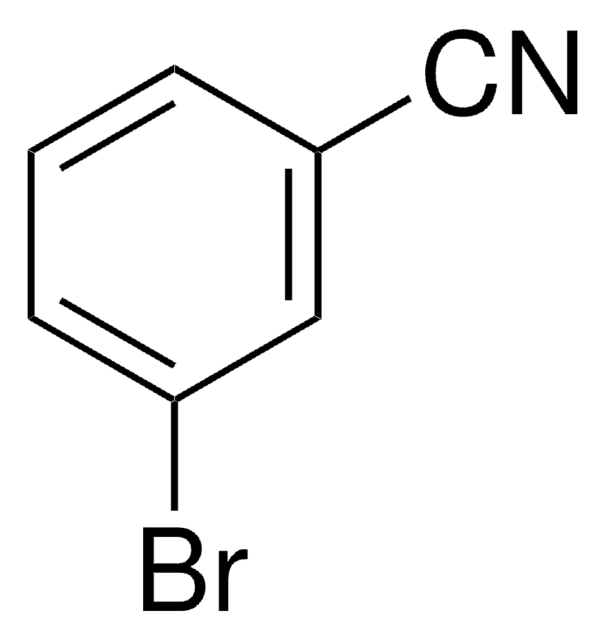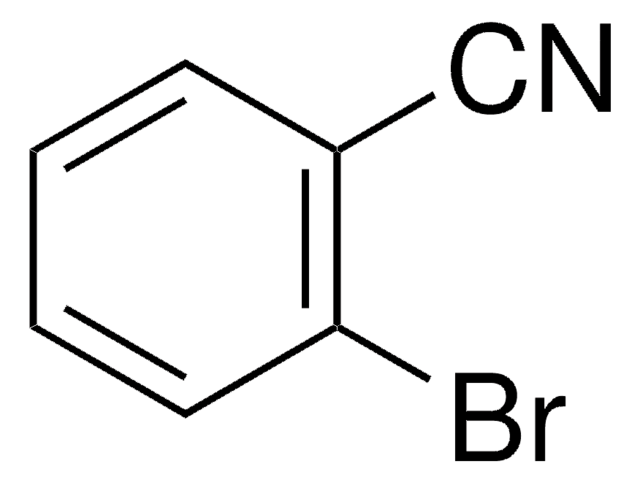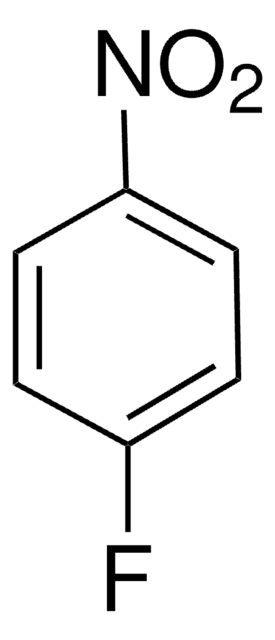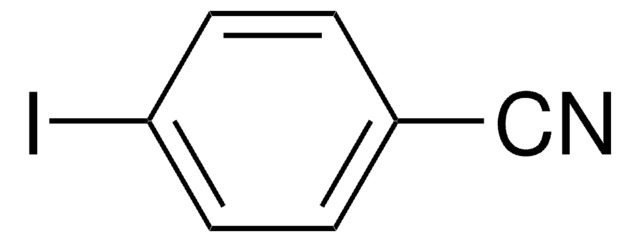139416
4-Fluorobenzonitrile
99%
Synonym(s):
1-Cyano-4-fluorobenzene, 4-Cyanofluorobenzene, 4-Fluorobenzonitrile, 4-Fluorocyanobenzene, Para-fluorobenzonitrile, p-Cyanofluorobenzene, p-Fluorobenzonitrile, p-Fluorophenyl cyanide
About This Item
Recommended Products
assay
99%
form
solid
bp
188 °C/750 mmHg (lit.)
mp
32-34 °C (lit.)
SMILES string
Fc1ccc(cc1)C#N
InChI
1S/C7H4FN/c8-7-3-1-6(5-9)2-4-7/h1-4H
InChI key
AEKVBBNGWBBYLL-UHFFFAOYSA-N
Looking for similar products? Visit Product Comparison Guide
General description
signalword
Danger
hcodes
Hazard Classifications
Acute Tox. 4 Dermal - Acute Tox. 4 Inhalation - Acute Tox. 4 Oral - Flam. Sol. 1
Storage Class
4.1B - Flammable solid hazardous materials
wgk_germany
WGK 3
flash_point_f
149.0 °F - closed cup
flash_point_c
65 °C - closed cup
ppe
dust mask type N95 (US), Eyeshields, Faceshields, Gloves
Certificates of Analysis (COA)
Search for Certificates of Analysis (COA) by entering the products Lot/Batch Number. Lot and Batch Numbers can be found on a product’s label following the words ‘Lot’ or ‘Batch’.
Already Own This Product?
Find documentation for the products that you have recently purchased in the Document Library.
Customers Also Viewed
Our team of scientists has experience in all areas of research including Life Science, Material Science, Chemical Synthesis, Chromatography, Analytical and many others.
Contact Technical Service













